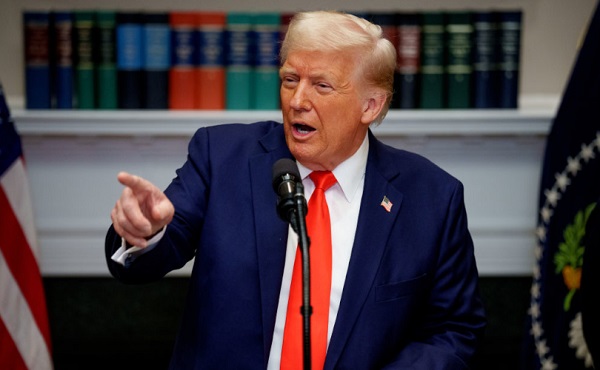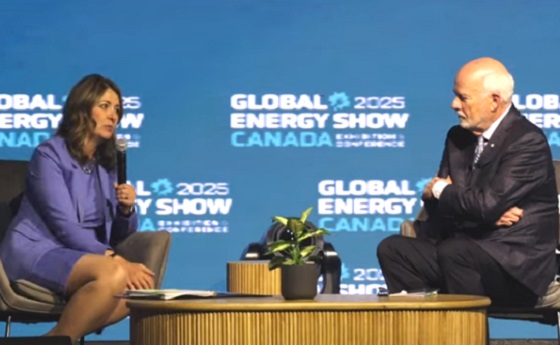2025 Federal Election
Canada Continues to Miss LNG Opportunities: Why the World Needs Our LNG – and We’re Not Ready
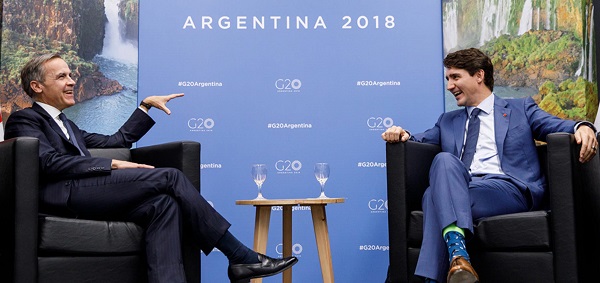
From EnergyNow.Ca
By Katarzyna (Kasha) Piquette, Founder and CEO, Canadian Energy Ventures
When Russia invaded Ukraine in 2022, Europe’s energy system was thrown into chaos. Much of the 150 billion cubic meters of Russian gas that once flowed through pipelines had to be replaced—fast. Europe turned to every alternative it could find: restarting coal and nuclear plants, accelerating wind and solar approvals, and most notably, launching a historic buildout of LNG import capacity.
Today, LNG terminals are built around the world. The ‘business case’ is solid. The ships are sailing. The demand is real. But where is Canada?
As of March 28, 2025, natural gas prices tell a story of extreme imbalance. While Europe and Asia are paying around $13 per million BTU, prices at Alberta’s AECO hub remain below $2.20 CAD per gigajoule—a fraction of global market levels. This is more than a pricing mismatch. It’s a signal that Canada, a country rich in natural gas and global goodwill, is failing to connect the dots between energy security abroad and economic opportunity at home.
Since 2022, Europe has added over 80 billion cubic meters of LNG import capacity, with another 80 billion planned by 2030. This infrastructure didn’t appear overnight. It came from urgency, unity, and massive investment. And while Europe was preparing to receive, Canada has yet to build at scale to supply.
We have the resource. We have the relationships. What we lack is the infrastructure.
Estimates suggest that $55 to $75 billion in investment is needed to scale Canadian LNG capacity to match our potential as a global supplier. That includes pipelines, liquefaction terminals, and export facilities on both coasts. These aren’t just economic assets—they’re tools of diplomacy, climate alignment, and Indigenous partnership. A portion of this investment can and should be met through public-private partnerships, leveraging government policy and capital alongside private sector innovation and capacity.
Meanwhile, Germany continues to grapple with the complexities of energy dependence. In January 2025, German authorities seized the Panama-flagged tanker Eventin, suspected of being part of Russia’s “shadow fleet” used to circumvent oil sanctions. The vessel, carrying approximately 100,000 tons of Russian crude oil valued at €40 million, was found adrift off the Baltic Sea island of Rügen and subsequently detained. This incident underscores the ongoing challenges Europe faces in enforcing energy sanctions and highlights the pressing need for reliable, alternative energy sources like Canadian LNG.
What is often left out of the broader energy conversation is the staggering environmental cost of the war itself. According to the Initiative on GHG Accounting of War, the war in Ukraine has produced over 230 million tonnes of CO₂ equivalent (MtCO₂e) since 2022—a volume comparable to the combined annual emissions of Austria, Hungary, the Czech Republic, and Slovakia. These emissions come from military operations, destruction of infrastructure, fires, and the energy used to rebuild and support displaced populations. Yet these emissions are largely absent from official climate accounting, exposing a major blind spot in how we track and mitigate global emissions.
This is not just about dollars and molecules. This is about vision. Canada has an opportunity to offer democratic, transparent, and lower-emission energy to a world in flux. Canadian LNG can displace coal in Asia, reduce reliance on authoritarian suppliers in Europe, and provide real returns to our provinces and Indigenous communities. There is also growing potential for strategic energy cooperation between Canada, Poland, and Ukraine—linking Canadian LNG supply with European infrastructure and Ukrainian resilience, creating a transatlantic corridor for secure and democratic energy flows.
Moreover, LNG presents Canada with a concrete path to diversify its trade relationships, reducing overdependence on the U.S. market by opening new, high-value markets in Europe and Asia. This kind of energy diplomacy would not only strengthen Canada’s strategic position globally but also generate fiscal capacity to invest in national priorities—including increased defense spending to meet our NATO commitments.
Let’s be clear: LNG is not the endgame. Significant resources are being dedicated to building out nuclear capacity—particularly through Small Modular Reactors (SMRs)—alongside the rapid expansion of renewables and energy storage. But in the near term, LNG remains a vital bridge, especially when it’s sourced from a country committed to environmental responsibility, human rights, and the rule of law.
We are standing at the edge of a global shift. If we don’t step up, others will step in. The infrastructure gap is closing—but not in our favor.
Canada holds the key. The world is knocking. It’s time we opened the door.

Sources:
- Natural Gas Prices by Region (March 28, 2025): Reuters
- European LNG Import Capacity Additions: European Commission
- German Seizure of Russian Shadow Fleet Tanker: Reuters
- War Emissions Estimate (230 MtCO₂e): Planetary Security Initiative
2025 Federal Election
NDP’s collapse rightly cost them official party status
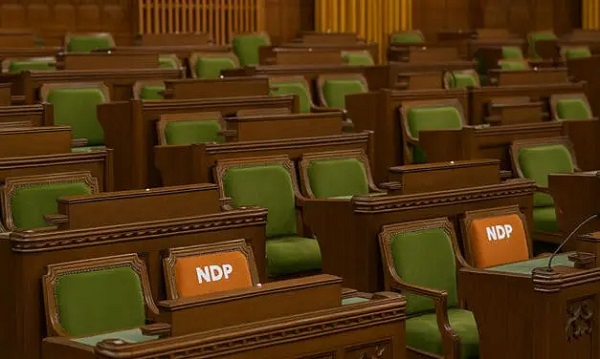
This article supplied by Troy Media.
 By Michael Taube
By Michael Taube
Official party status requires 12 seats. The NDP got seven. End of story
Rules are rules.
That, in a nutshell, is why the NDP wasn’t granted official party status in the House of Commons on Monday. Prime Minister Mark Carney and the
Liberals, to their credit, made the right decision.
Let’s examine why.
The 1963 Senate and House of Commons Act passed an amendment that gave an annual allowance to party leaders other than the prime minister and
leader of the Opposition. In doing so, the Canadian government had to establish what constitutes a “political party.” The definition they came up with was a sensible one: it had to have a “recognized membership of 12 or more persons in the House of Commons.”
This important amendment is still used today.
The NDP fell from 24 to a paltry seven seats in last month’s federal election. (There are a total of 343 seats in the House of Commons.) They finished with 1,234,673 votes, or 6.29 per cent, which was behind the Liberals, Conservatives and Bloc Québécois. Party leader Jagmeet Singh, who had represented the former Burnaby South riding since 2019, finished a distant third in the newly created Burnaby Central riding and resigned.
The NDP’s seven seats is well below the 12-seat requirement needed for official party status. This means Canada’s socialist alternative won’t be able to ask questions in the House of Commons and will lose out on money for research purposes.
Or, to put it another way, they’re plumb out of luck.
Hold on, some people said. They pointed out that the NDP’s seat count and popular vote only plummeted because many progressive voters backed Carney and the Liberals as the best option to counter U.S. President Donald Trump and his tariffs. They felt that the NDP’s long history as a champion for unions and the working class should count for something. They suggested there should be an exception to the rule.
Guess what? They’re wrong.
This is the worst election result in the party’s history. Even its predecessor, the Co-operative Commonwealth Federation (CCF), did marginally better in its first campaign. The CCF won seven out of 245 seats—and earned 410,125 votes, or 9.31 per cent—in the 1935 election. Party leader J.S. Woodsworth, who had represented the riding of Winnipeg North Centre as an Independent Labour MP since 1925, comfortably held his seat.
Meanwhile, this won’t be the first time they’ve ever lost official party status.
The NDP dropped from 43 to nine seats in the 1993 election. It was a dismal showing, to say the least. There was a suggestion at the time that then-party leader Audrey McLaughlin, the first woman to lead a party with political representation in Canada’s House of Commons, deserved a better fate. While the NDP certainly came closer to achieving the 12-seat requirement in this particular election, Prime Minister Jean Chrétien and the Liberals decided against granting them official party status.
Why? As I mentioned earlier, rules are rules.
Then again, British pilot Harry Day notably told his fellow flying ace Douglas Bader in 1931, “You know my views about some regulations—they’re written for the obedience of fools and the guidance of wise men.”
Does this mean that individuals and organizations who follow rules are, in fact, fools? Not at all. While certain rules in a liberal democratic society can range from slightly questionable to utterly ridiculous, they’re usually put in place for a specific purpose.
In the case of the House of Commons, it’s to ensure that a bar has been set with respect to political representation. Is 12 seats the right number? That’s difficult to say. It certainly prevents small protest parties and one-issue parties that unexpectedly win a tiny number of seats in an election from acquiring power and status right off the bat. They need to win more seats and grow in size and stature to reach a point of respectability. Most of them never reach this point and disappear while others float in a constant state of mediocrity like the Green Party of Canada. ’Tis the nature of the political beast.
One final point. If Singh and the NDP had reached double digits in total number of seats in 2025, a solid case could have been made in favour of official party status. If they had finished with 11 seats, it would have almost been a lock. Neither scenario ultimately materialized, which is why Carney and the Liberals did exactly what they did.
Michael Taube is a political commentator, Troy Media syndicated columnist and former speechwriter for Prime Minister Stephen Harper. He holds a master’s degree in comparative politics from the London School of Economics, lending academic rigour to his political insights.
Troy Media empowers Canadian community news outlets by providing independent, insightful analysis and commentary. Our mission is to support local media in helping Canadians stay informed and engaged by delivering reliable content that strengthens community connections and deepens understanding across the country.
2025 Federal Election
Judicial recounts give Conservatives 2 more seats, keeping Liberals short of majority
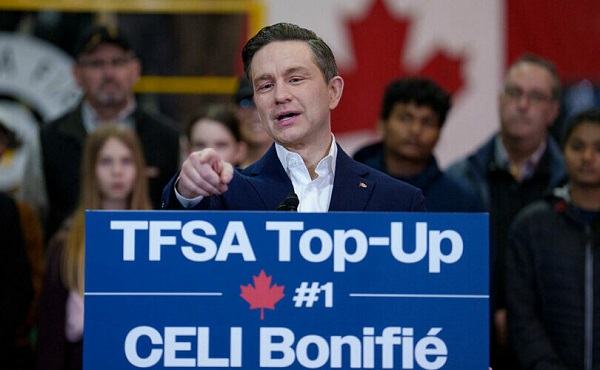
From LifeSiteNews
After a judicial recount, Conservative candidate Kathy Borrelli has officially won over Liberal incumbent Irek Kusmierczyk, in the Ontario riding of Windsor-Tecumseh-Lakeshore.
Judicial recounts from the 2025 federal election have given the Conservative Party two new seats, with one candidate winning by just four votes.
After a judicial recount, Conservative candidate Kathy Borrelli has officially won over Liberal incumbent Irek Kusmierczyk, in the Ontario riding of Windsor-Tecumseh-Lakeshore.
Borrelli got 32,090 votes, with Kusmierczyk getting 32,086 votes, and NDP candidate Alex Ilijoski getting 4,240 votes.
In the Newfoundland riding of Terra Nova-The Peninsulas, Conservative candidate Jonathan Rowe beat out Liberal Anthony Germain by just 12 votes after a recount with the initial result showing a Liberal victory.
The new election results mean the Conservatives now have 144 seats with the Liberals at 169, three short of a majority.
Judicial recounts are automatically triggered when the margin of victory for a candidate is less than 0.1 percent of valid votes.
While these recounts have favored the Conservatives, others have gone in the Liberal Party’s favor.
A May 16 judicial recount switched the southern Ontario riding of Milton East-Halton Hills South to the Liberals with a 21-vote victory over the Conservatives.
Overall, the election results have been a big blow to the Conservative Party, which on top of losing the election also saw its leader, Pierre Poilievre, fail to win his long-held seat. However, Poilievre is expected to run in a yet-to-be-announced by-election in Alberta to reclaim a seat in Parliament.
-
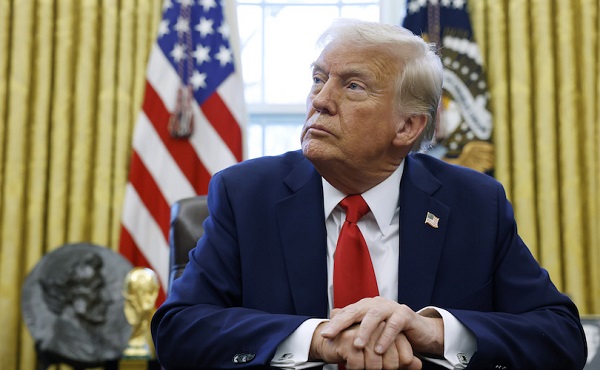
 conflict1 day ago
conflict1 day agoTrump dismisses US intelligence that Iran wasn’t pursuing nuclear bomb before Israeli attack
-
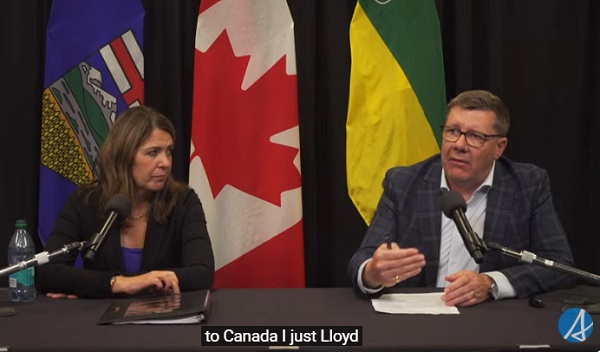
 Alberta1 day ago
Alberta1 day agoUnified message for Ottawa: Premier Danielle Smith and Premier Scott Moe call for change to federal policies
-
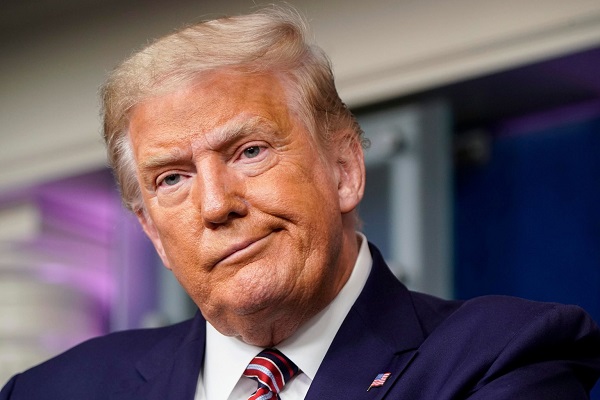
 Business1 day ago
Business1 day agoCanada’s critical minerals are key to negotiating with Trump
-

 Alberta2 days ago
Alberta2 days agoCentral Alberta MP resigns to give Conservative leader Pierre Poilievre a chance to regain a seat in Parliament
-
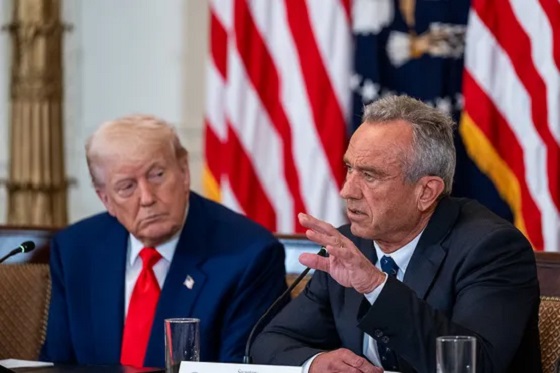
 Business17 hours ago
Business17 hours agoRFK Jr. planning new restrictions on drug advertising: report
-

 Business1 day ago
Business1 day agoRhetoric—not evidence—continues to dominate climate debate and policy
-
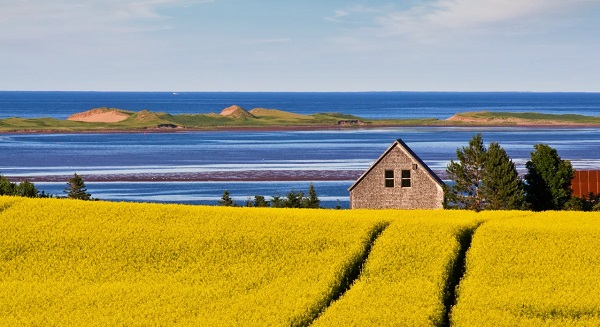
 espionage7 hours ago
espionage7 hours agoFrom Sidewinder to P.E.I.: Are Canada’s Political Elites Benefiting from Beijing’s Real Estate Reach?
-
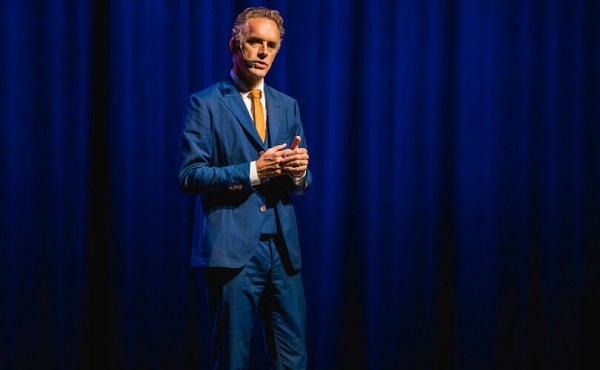
 Censorship Industrial Complex1 day ago
Censorship Industrial Complex1 day agoJordan Peterson reveals DEI ‘expert’ serving as his ‘re-education coach’ for opposing LGBT agenda


